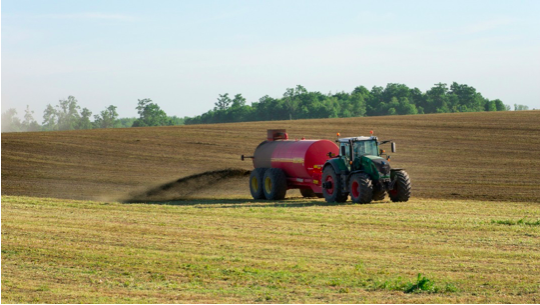Why Better Fertilizer is Essential for Combatting Climate Change

Though often overlooked, few developments in the history of the modern world have had as great an impact on human civilization as fertilizer.
Farmers had used basic fertilizers like manure to improve crop yields for thousands of years, but it wasn’t until the twentieth century when scientific advancements unlocked the full potential of chemical fertilizers to transform human agriculture.
New, more potent fertilizers played an enormous role in increasing the productivity of American farms in the twentieth century, a period in which agricultural output quadrupled even as the index of aggregate inputs remained flat. There is likely that, without the early twentieth century breakthroughs in fertilizer technology, the remarkable post-war population boom would not have been possible.
But just as fertilizer has proven to be an essential tool for increasing soil productivity and dramatically expanding the amount of food that can be grown, it has also had less salubrious effects. Environmental experts have noted that fertilizer is also playing an outsized role in climate change.
A key component of most fertilizers is nitrogen, and scientists have long understood that soil microbes convert nitrogen-rich fertilizer into nitrous oxide — a greenhouse gas three hundred times more potent than carbon dioxide when it comes to trapping heat. This means that, for all the benefits that come from using fertilizer, it is also one of the most potent drivers of climate change.
Given the importance of modern fertilizers for feeding a growing global population, designing fertilizers that are more eco-friendly has become a major priority.
One of the first steps agricultural experts have taken is to educate farmers about the risks of nitrogen-rich fertilizers. While all nitrogen fertilizers release nitrous oxide, the amount of nitrous oxide released increases exponentially with the amount of fertilizer that has been spread. For this reason, keeping fertilizer use within an optimal, low range is one of the easiest ways to limit its environmental impact.
In the medium-term, scientists have started to design fertilizers that use less nitrogen, or which cut out nitrogen altogether. While this will involve a major shift in terms of fertilization practice, there is evidence to suggest that some low-nitrogen fertilizers can significantly reduce emissions without decreasing crop yield.
But it isn’t simply a question of making fertilizers that are less likely to release greenhouse gasses when applied to fields; the production process can also be carbon-intensive, which is why revolutionary products for the heating industry are being used to produce fertilizer that is as close as possible to carbon-neutral.
As much as one-third of greenhouse gas emissions come from agriculture. But with the human population growing rapidly every year, and with restrictions on the amount of farmland that is available worldwide, reverting to pre-industrial fertilization methods will not be possible if there is to be enough food for everyone.
This means that finding more efficient ways of producing fertilizer, and developing fertilizers that produce fewer greenhouse gasses, will be essential. Fortunately, scientists, engineers, and tech experts are developing innovative approaches to design and producer fertilizers for a more sustainable future.
